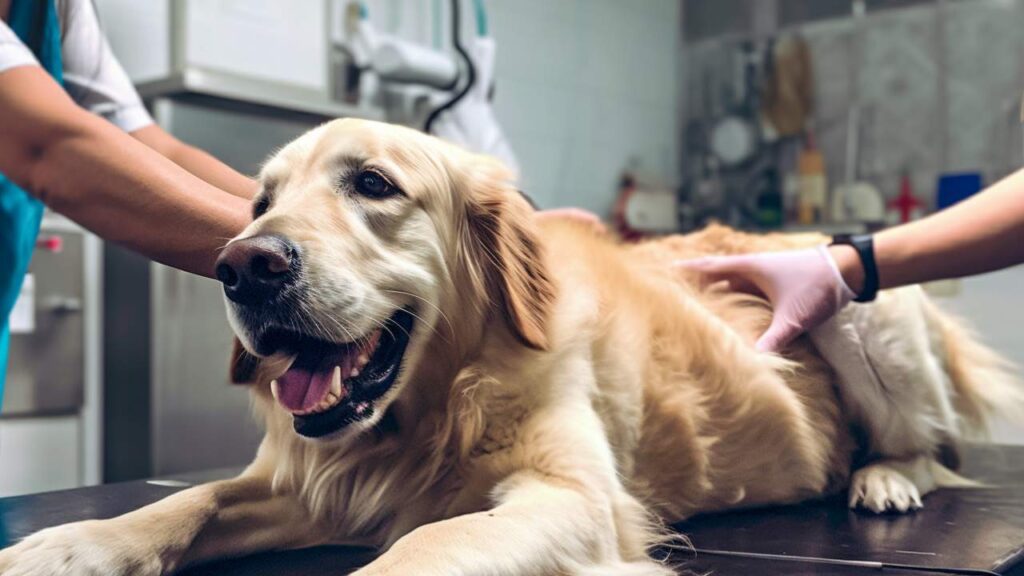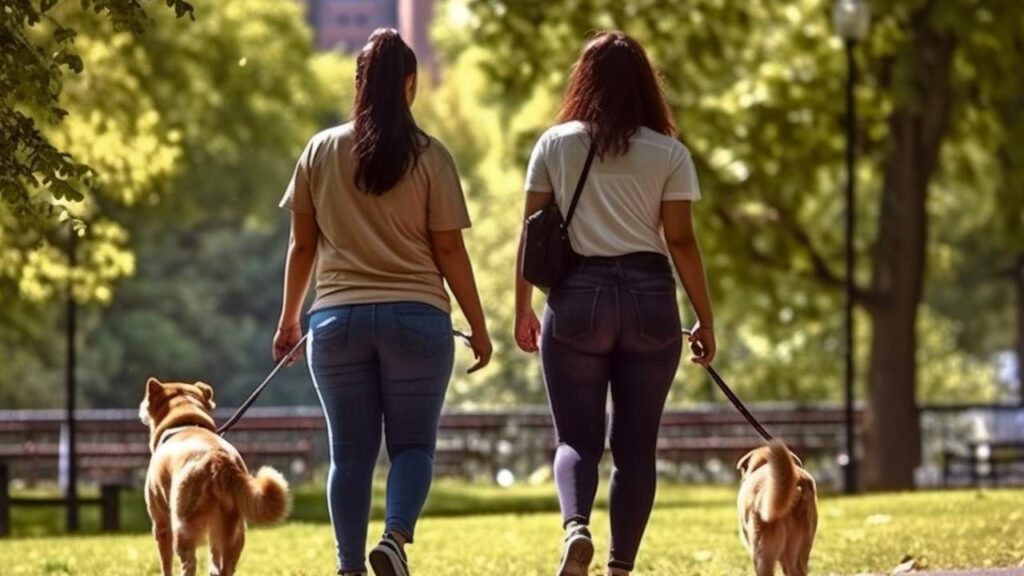Adopting a dog is a significant life decision that should be approached with both enthusiasm and careful planning. Before bringing a canine companion into one’s home, potential pet owners must assess their readiness to make a long-term commitment to the animal’s well-being.
It is also imperative to consider the environment in which the dog will be living. A safe, secure home is a prerequisite, ensuring that all potential hazards are mitigated and that the space is conducive to a pet’s health and happiness. This includes puppy-proofing living areas and yards to prevent accidents and injuries.
An understanding of the specific needs and characteristics of different breeds can guide one in choosing a dog whose personality and energy level match their household dynamic. Selecting a compatible pet paves the way for a smoother transition and a stronger human-animal bond.
Considering Your Lifestyle and Commitment
Adopting a dog requires careful consideration of how a pet will fit into one’s daily life and long-term plans. It’s crucial to assess both the current lifestyle and the commitment required to ensure a healthy, happy environment for the pet.
Assessing Your Lifestyle
When individuals or families consider adding a dog to their household, it’s important to evaluate daily routines. Someone who travels frequently for work may find it challenging to provide consistent care for a dog.
Conversely, those with a stable routine and the ability to integrate dog walks and playtime into their daily schedule will likely find it easier to meet a dog’s needs. For those with children or other pets, ensuring a potential dog is a good fit for everyone involved in terms of temperament and energy level is essential.
Understanding the Commitment of Owning a Pet
Bringing a dog into a home is a long-term commitment that can span over a decade. Prospective pet owners must consider the responsibility involved in providing for the dog’s welfare, including regular exercise, training, and healthcare needs.
This includes budgeting for pet insurance and routine veterinarian visits. The choice between an adult dog and a puppy can also have significant implications for the required time commitment, with puppies needing more intensive supervision and training.
Choosing the Right Dog
When adopting a dog, it’s important to assess your lifestyle and environment to match with the appropriate breed and dog age. Your choice can have a significant impact on your life and the happiness of your new pet.
Researching Breeds
Different breeds have varying energy levels, grooming needs, and temperaments. It is crucial to select a breed that aligns with one’s lifestyle.
For example, a Border Collie requires extensive daily exercise, making it ideal for active individuals, while a Bulldog may be better suited for those living a more sedentary lifestyle. Websites like Petfinder can offer insights into different breeds’ characteristics.
Deciding Between a Puppy or an Adult Dog
Puppies require significant time for training and socialization; they also go through a teething phase that can result in chewed items. On the other hand, adult dogs often come with established behaviors and may be housebroken, as highlighted by PetMD, making them a suitable option for those with less time for training.
Considering the Source
The choice between obtaining a dog from shelters or rescue operations is significant. Shelters often have a variety of breeds and ages, and adopting from one can save a dog’s life.
Choosing a rescue dog can be a rewarding experience, often giving senior dogs or dogs with past trauma a second chance at a loving home. The Spruce Pets offers guidance on what questions to ask when considering these sources.
Preparing Your Home

Before a new pet joins their family, one must ensure their home is ready and welcoming. This means creating a safe environment, stocking up on essential supplies, and setting up a designated area for the dog to call its own.
Creating a Safe Environment
Home safety for pets parallels childproofing, focusing on preventing access to potentially hazardous items. Baby gates can restrict a dog’s movement to safe zones.
Homeowners should secure loose wires, ensure no small, swallowable objects are within reach, keep cleaning supplies locked away, and remove toxic plants. Furniture corners may need protection, and a comfortable spot free from drafts should be identified to place a comfy bed.
Purchasing Essential Supplies
A new dog will necessitate various supplies. One should procure food and water bowls, a crate for house training and safe confinement, toys for mental and physical stimulation, and cleaning gear for accidents.
Other items include a collar, leash, identification tags, and possibly tech such as cameras to monitor the pet. It is essential to choose items that will make the pet feel comfortable and secure.
Establishing a Designated Area
Designating an area for the dog helps with house training and offers a sense of security. The location should include a crate or comfy bed, and it’s advisable to have it in a low-traffic area to provide a tranquil environment. Surround the area with the dog’s toys and consistent comfort elements, like a favorite blanket, to make the space familiar and inviting.
Financial Considerations
Before welcoming a new dog into your home, it is important to understand the financial responsibility that comes with being a pet owner. From initial costs to ongoing expenses, preparing for the economic aspects of dog ownership is essential.
Budgeting for Dog Ownership
An essential aspect of pet ownership is developing a budget that includes all initial and recurring expenses. Costs can include purchasing necessities such as a leash, collar, food bowls, a bed, and toys.
On average, a new pet owner should anticipate initial expenses to potentially range from a few hundred to over a thousand dollars. Monthly expenses for food and grooming needs should also be factored in, as well as savings for unexpected costs such as health emergencies.
Understanding the Cost of Veterinary Care
Veterinary care is a critical component of a dog’s health and well-being. Regular check-ups, vaccinations, and routine procedures like microchipping and spaying or neutering can add to the cost of pet adoption.
Additionally, unforeseen health issues may arise that necessitate emergency veterinary visits or specialized treatment, which can be expensive. Adequately researching local vet costs can help pet owners plan financially for their pet’s medical care.
Considering Pet Insurance Options
Investing in pet insurance can offer a sense of financial security by potentially covering some of the pet’s medical expenses. Most insurance plans will not cover pre-existing conditions, so enrolling in a policy early is advantageous.
Pet owners should compare different insurance options, as coverage and costs can vary significantly. Understanding deductibles, co-pays, and coverage limits will help determine the best plan for their budget and their dog’s needs.
Health and Nutrition
Before bringing a new dog into your home, it’s crucial to understand the fundamentals of dog nutrition and the importance of establishing veterinary care. They will need a balanced diet, access to fresh water, and regular health checks to maintain their well-being.
Learning About Dog Nutrition
A dog’s diet must be nourishing and well-balanced. Protein, fats, carbohydrates, vitamins, and minerals must be appropriately proportioned to suit their age, breed, and health requirements.
High-quality commercial dog foods typically meet these nutritional standards, but it’s important to read labels and understand the ingredients. Puppies and adult dogs have different nutritional needs; for instance, puppies require more calories and nutrients that support growth.
Scheduling First Veterinary Visits
After adoption, scheduling an appointment with a veterinarian is essential for a health evaluation and to discuss a vaccination schedule. Routine care such as flea, tick, and heartworm preventatives should be addressed. The vet will also define an appropriate feeding schedule and recommend food types, taking any unique needs of the dog into account.
Understanding Health Checks
Regular health checks are vital to a dog’s longevity. These check-ups often include weight monitoring, dental assessments, and updating vaccinations.
Owners should familiarize themselves with signs of potential health issues and be prepared to provide fresh water and food daily, as well as occasional healthy treats for positive reinforcement during training and bonding activities.
Behavior and Training
Before introducing a new dog to their home, the prospective owner must prioritize behavior and training to ensure a smooth transition. A well-trained dog not only makes for a harmonious household but also ensures the safety and happiness of both the pet and its human family.
House Training Basics
House training is a critical step when adopting a dog, particularly a puppy. They should learn where it’s appropriate to relieve themselves. Owners must establish a consistent schedule for potty breaks, typically after meals, first thing in the morning, and before bedtime.
Using positive reinforcement when the dog successfully goes potty outside can be highly effective. Accidents should be calmly handled without punishment to avoid creating a fearful or anxious dog.
Socialization and Obedience
A vital component of a dog’s well-being is socialization with people, other dogs, and, if pertinent, with cats and children. Controlled exposure to various scenarios teaches them appropriate behavior and helps prevent fear or aggression.
Obedience training, on the leash or with commands, builds a foundation of mutual respect and understanding. Chew toys can be useful in redirecting a puppy’s teething urges away from furniture.
Setting Rules and Boundaries
Owners need to establish clear rules and boundaries from day one. Consistency is key; a dog should not be allowed on the couch one day and scolded for it the next. Physical barriers can be used to limit access to certain areas of the home.
A leash can be a tool in boundary training, providing control during walks or in off-limit areas until the dog understands its boundaries.
Legal Responsibilities

When adopting a dog, one must fulfill certain legal responsibilities to ensure the safety and identification of the new pet. These obligations typically include complying with registration and microchipping mandates as well as understanding and following local pet laws.
Registering and Microchipping Your Dog
Registering one’s dog with the local municipality is a mandatory step in many areas. This process often involves submitting the dog’s name, the owner’s contact information, and proof of rabies vaccination from a vet.
It’s also a standard practice to have one’s dog microchipped. A microchip is a permanent form of identification that can help reunite lost dogs with their owners. Many shelters require a microchip before one can adopt a dog.
Understanding Local Pet Laws
Local pet laws cover a range of topics, from leash requirements to noise ordinances. Owners should familiarize themselves with such regulations to avoid legal complications. For instance, it is generally required that dogs be walked with a leash and harness in public spaces.
Additionally, many localities have specific stipulations regarding dog tags, which should bear the dog’s name and owner’s contact information for easy identification. Unlike dogs, cats may not have the same stringent requirements, but it’s essential to verify with local authorities.
Integrating Into the Family
Integrating a new dog into the family requires structured introductions, establishing routines, and building a bond for a smooth transition.
Introducing to Family Members
The introduction of a new dog to family members should be done calmly and one at a time. For families with children, it’s crucial to teach them how to approach the dog gently. A new collar can help distinguish the pet as a new member of the family.
Adjusting to New Routines
Dogs thrive on routine, so establishing a consistent schedule for exercise, sleep, and grooming is essential. This could include daily walks, feeding times, and designated sleep areas, helping the dog feel more secure during the transition from shelter to home.
Creating a Bond with Your Dog
Fostering companionship involves quality time and mutual respect. Exercise is not only for physical health but also an opportunity for bonding. Providing consistent companionship and a reassuring presence can reinforce the bond between the dog and its new family.
Community and Support

Adopting a dog brings a shift in lifestyle that necessitates a support network for socialization and training. Engaging with local dog owners and seeking professional advice can significantly ease this transition.
Joining Local Dog Communities
Local dog communities offer an opportunity for both the dog and owner to engage in social activities, improving the dog’s social behavior and comfort with new environments.
Owners can locate nearby dog parks or online forums where they can exchange tips and organize playdates. This not only benefits the dog’s social skills but also provides a platform for adopters to share experiences and advice.
Finding Professional Support When Needed
It’s vital for dog owners to have access to professional support to ensure their dog’s well-being. This includes identifying a trusted veterinarian for health-related inquiries and regular check-ups.
Additionally, enlisting the services of certified training schools or private trainers can address behavioral issues and reinforce positive behavior. Building a relationship with these professionals provides a network of support and resources for both novice and experienced dog owners.
Understanding Adoption Process
Before bringing a new canine companion into your life, it’s crucial to understand the different pathways of adopting a dog, each with its own procedures and considerations.
Navigating Shelter Adoptions
When adopting from a shelter, one typically begins the journey at an adoption center. Aspiring pet owners should be ready for a challenging (but rewarding!) process, from filling out detailed applications to going through interviews, to ensure a suitable match with a rescue dog.
The shelter will often offer guidance on the necessary supplies, such as collars, leashes, and paper towels for initial care at home.
After the application review, shelters often provide a chance to meet potential dogs, and some even encourage fostering first. If considering fostering, remember that it’s a temporary commitment with the goal of providing a rescue dog with a home-like environment while awaiting permanent placement.

